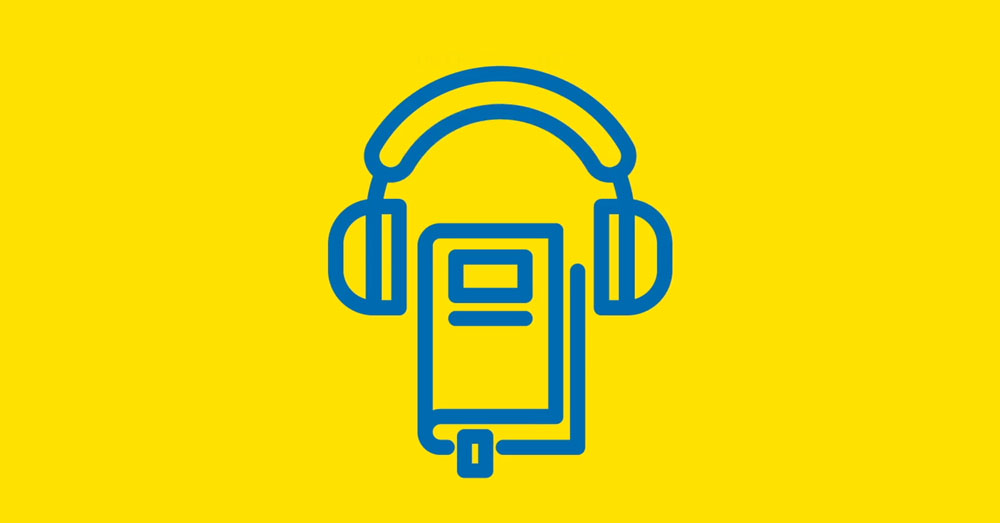How audio content can add a new notch to your content marketing strategy.
Audio content is beginning to emerge from the shadows and become a real asset in the content marketing space.
Nowadays, lots of big brands are starting to utilise this content format, from audio catalogues to weekly podcasts. In fact, it’s believed that over 28.3 million adults listen to digital audio every week in the UK.
With the sharp rise in demand and the development of audio-first social channels, the next couple of years will prove a real watershed moment for businesses.
Do you continue to rely on your trusty content marketing methods? Or do you adapt and evolve to this new exciting world of audio?
This article aims to answer these questions, covering the what, the why and the how of audio content.
What is audio content?
Audio content is material consumed through listening. Music, radio and podcasts are all great examples of this form of media.
Audio content is created using one of three methods:
- Turning written text into the spoken word via NLP – natural language processing.
- Recording your voice.
- Recognising voice commands through technology.
Why is audio content important?
The ease at which people can interact with audio content is a big plus, as many of us grow tired of the more visual forms of marketing.
Unlike video content, your audience doesn’t need to stare at a screen to consume the information.
Whether they’re driving a car, cooking a meal or walking their dog, they can enjoy audio content on the go whilst doing other things. It’s revolutionising the way everyone multitasks.
We typically listen to audio content through speaker and headphone devices. Developments in these technologies – such as improved Bluetooth connections and smart speaker systems – have helped to contribute to the recent rebirth of audio content in marketing.
Instead of turning to our phones, we can ask Alexa to complete a task. Audio content is a perfect companion and personal assistant wrapped up in one.
If you think about it, the use of audio long outdates the need for reading and writing as a communication tool. As humans, we’ve always used sound to speak and listen. So, we’re accustomed to this format without even realising it.
Audio content can boost on-page SEO performance too. In May 2019, Google officially announced that they would begin to serve podcasts and other forms of audio content in Google search.
Among these other formats includes audio blogging. If you’re wondering why the average time spent or bounce rate metrics are underperforming, perhaps you need to explore a different way of presenting your content.
You can still focus on the same rich content that improves your ranking, but use a handy tool like SpeechKit to convert your existing long-form content into audio files.
Podcasts are another smart option.
According to a study published by IAB, around two-thirds of listeners say they’re more likely to consider purchasing or researching a product based on a podcasts’ recommendation or an audio ad from a podcast they like. So, there’s a good chance you can turn these types of audio content into a viable tool for lead generation.
Of course, there are drawbacks to audio content. These include the difficulty of ensuring high sound quality and less impactful call-to-action (CTA) opportunities.
However, most understand the importance of audio content and are experimenting with many different types.

Types of audio content
While there are some old stalwarts of audio content included in this list, each example has its value. It’s just a matter of working out what works for your business.
Podcasts
In the last decade, podcasts have gone from a platform generally reserved for little-known comedians and indie musicians to a haven for A-list celebrities and big brands.
McDonald’s, eBay and Microsoft are among some of the organisations with successful, branded podcasts.
Lending itself well to monologues and interesting interviews, podcasts allow companies to draw customers in with catchy adverts, event promotions and subtle product mentions.
Meanwhile, you can reach an entirely new audience through platforms like Apple Podcasts, Google Podcasts and Spotify.
Audiobooks
Standing out in the podcasting and radio world can be tricky. However, the audiobook business is a lot less diluted, making it easier to get yourself noticed.
It’s also a growing market, with audiobook sales increasing by 16% in 2020 compared with the previous year.
Another key benefit is that you can seamlessly turn popular eBooks into audiobooks. This reduces effort while engages an entirely new audience with your finest content.
Editorial
As smart speakers such as Alexa, Siri and Cortana rise in popularity, every article that you write is becoming audio content.
Using text-to-speech technology, these devices will read your content aloud. Writing in a conversational tone and voice search optimisation are therefore becoming important considerations for marketers.
Targeting conversational keywords and understanding the behaviour of smart systems can also be key.
For example, Alexa responses are based on the Bing search engine, so Bing search engine optimisation (SEO) may become a more prominent consideration.
Social media audio
Audio is starting to find its voice on social platforms. In fact, audio-first social was identified as a key emerging trend by Andy Lambert, one of the founding members of ContentCal.
Much of this comes down to the rise of podcasts and audio-only channels like Clubhouse. Audio content allows businesses to connect on a personal note and is extremely accessible. Listeners can tune in at work and on the move. So, pairing it up with the power of social seems like a natural transition.
Clubhouse caused quite a stir in 2020 through its ability as a channel to facilitate group audio-only conversations in chatrooms. This enabled users to create real social connections, without the issue of screen fatigue, distractions and the pressures of being on camera.
However, times are changing. The long-term success of Clubhouse has been subject to debate and many have predicted its downfall. Some of the social media giants are developing powerful features to rival this audio-only channel – including Twitter Spaces and Facebook Audio Rooms.
Nevertheless, the app’s concept has rarely been called into question. The fact that Facebook and Twitter have developed alternatives show the almighty potential within this form of audio content.
If you want to maximise the exposure of your brand’s voice, you should keep your ear to the ground with the latest audio-first social developments. As times goes on, this type of audio content will only grow and become more sophisticated.
Fresh audio content ideas
Podcasts, radio adverts and audiobooks are hardly revolutionary marketing mediums. Brands are, however, starting to experiment more with these channels and the following ideas are some of the most exciting innovations.
Go paperless with audio catalogues
You may have noticed that IKEA has introduced a new audio catalogue.
Through delving into the audio, prospective customers will uncover a set of vivid product descriptions, each split into individual chapters. These emulate the sections of their physical catalogue.
Such content shows that you’re trying to reduce your paper usage and your commitment to creating a greener future. Don’t be afraid to show off about that, especially if you have an environmentally conscious customer base.

Remarket popular content
Have you got a set of blogs that have resonated particularly well with your audience? Making these the centrepiece of podcast discussions can be a great idea, whether that’s perhaps through a simple monologue that digs deeper into the topic or an interview with the writer.
By doing so, you create content that you know people will be interested in.
Distribute these podcasts across each of the major podcasting platforms and link to the blog in the description. This will help you draw even more eyes onto the original content.
Incorporate audio into written content
Adding audio snippets to blogs, articles and perhaps even press releases will likely increase the amount of time a user spends on a page. Again, another tick for SEO.
Of course, you can record audio for each piece of editorial. Although, simply embedding relevant podcast episodes might be enough to help you shoot up Google’s search rankings.
Posting small teaser snippets from podcasts and audiobooks on social media can also increase traffic, boost subscribers and add eye-catching variety to people’s social feeds.
Hop onto other audio channels
There’s a lot of value in collaboration. Fresh, original insights don’t always have to live on your website or content marketing channels. By appearing as a guest on other podcasts or radio shows, you can attract a new audience.
Luckily, there are plenty to choose from. To be precise, there are over two million podcasts out there alone.
Just be sure to listen to the show before approaching the company/individual to see whether or not it’s a good fit. If you do proceed, remember to reference your company and your content for people to research.
Don’t underestimate the power of storytelling too. If you can evoke certain emotions, regarding tone and scripting, you’ll be onto a winner.
How to integrate audio into your content marketing plan?
Now that you have some audio content inspiration, it’s time to plan a strategy for how you will distribute it and maximise audience engagement.
While it’s important to push this new, exciting format, don’t be tempted to decrease your output for other forms of content.
Providing a variety of audio, written and video content will draw in the biggest possible audience, as it will suit different sources and preferences. Think of it as education. Some students find it easier to learn new things through visual prompts, while others are auditory learners.
Nevertheless, to find the perfect balance in your content marketing strategy, you need to plan.
Think about developing a content calendar that enables you to properly manage the process of creating, scheduling and sharing content.
This method gives you a chance to schedule in the lead-up to key events, such as seasonal holidays and business announcements. There may be key content themes to keep in mind, plus crossovers between different content types.

Continue to learn
Eager to discover more golden insights? Our CMA Learning Portal is packed full of valuable advice designed to elevate your content marketing strategy.
We also have specific articles that cover some forms of audio content, including:






